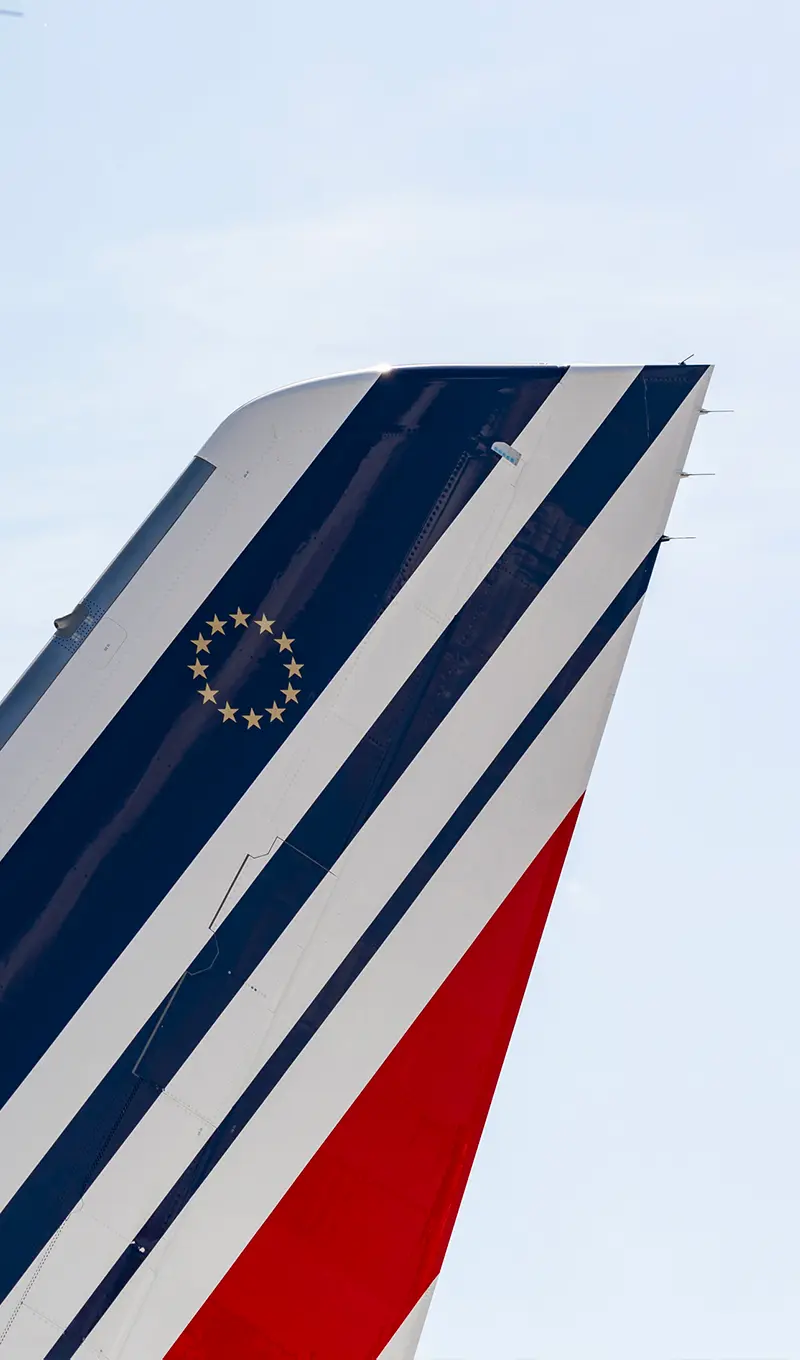
Since its beginnings, the sales department was modelled on aviation. The adventurous side of air travel was suited to a certain form of improvisation.
THE COMMERCIAL ADVENTURE
At one point on the Le Bourget field when a plane was ready to depart for London, a secretary auctioned off the available seats to the crowd of curious onlookers who were attracted by the spectacle of the planes. The sales team consisted of about 10 employees, with a few offices. One, for example, was the agency on rue de Châteaudun in Paris, whose window was filled with displays that advertised travel to London, Prague, and Saigon.
FREE TICKETS TO PROMOTE AIR TRAVEL
Planes remained fairly unknown despite how much they had developed. Air France created a "press and propaganda" department, along with a "publicity - arrangement - comfort" department, that gave away free tickets. This very new means of transport still had bad press… The company increased its service offerings with flights towards La Baule, Dinard and Jersey. The effort paid off. Traffic took off, and new tourist passengers joined the historical passengers – politicians, businessmen, and show business personalities. In 1939, Air France opened 77 agencies – in Paris, Buenos Aires, Hanoi, and elsewhere – and had 3000 sub-agents and correspondents.
OFFICES IN 77 COUNTRIES IN 1957
After the war, the exponential increase in traffic came along with an unprecedented sales effort. Air France multiplied its offices in its destinations and in the rest of the world. This was particularly the case in America, since the Atlantic could now be crossed. In 1957, the airline relied upon a network of 456 offices in 77 countries. Sales staff were taking off! The profession took on structure and new services appeared, such as "Sales promotion" and "Sales planning". The reservation services were centralized at the Hotel Carlton in Paris. Sitting around "reservation tables", a dozen employees answered the phone while moving – order in hand, brake pedal at their foot – the "drum" that in the middle of the table held up to 600 sheets (one per flight).

Poste de supervision générale, ventes - Années 1960
© air france
MARKETING BEFORE ITS TIME
Sales efforts were supported by visual advertising campaigns, with the fine touch of French graphic design. Great names in design – Raymond Loewy, Charlotte Perriand, Pierre Gauthier Delaye – were also asked to help harmonise the network, and adapt offices to have the "Air France personality". The airline was entering into the communications age… and the marketing age. The research that it performed between 1957 and 1960 with 60,000 French companies was the biggest ever undertaken up until then in France.
FROM THE COMPUTER AGE...
Telephones and computers – the first computer, an IBM 705, was from 1962 – allowed them to handle a clientèle that had increased 20 times in size since the war: 282,000 passengers were transported in 1946; 7.3 million in 1973! Air France developed tools to help its sales staff simultaneously process an ever-increasing mass of information. Amadeus (introduced in 1992) was the first computerised reservation system in Europe. It was used in conjunction with the Gaetan system for boarding and check-in.
...TO E-BUSINESS
The Internet, and the digitisation of exchange that it led to, extended this evolution. The sales organisation now relies less on local structures and more on global resources. Agencies have gradually disappeared, and reservations are centralised (in Wembley, for example, for Europe). Customers around the world can now reserve and print their tickets themselves, 24/7.
